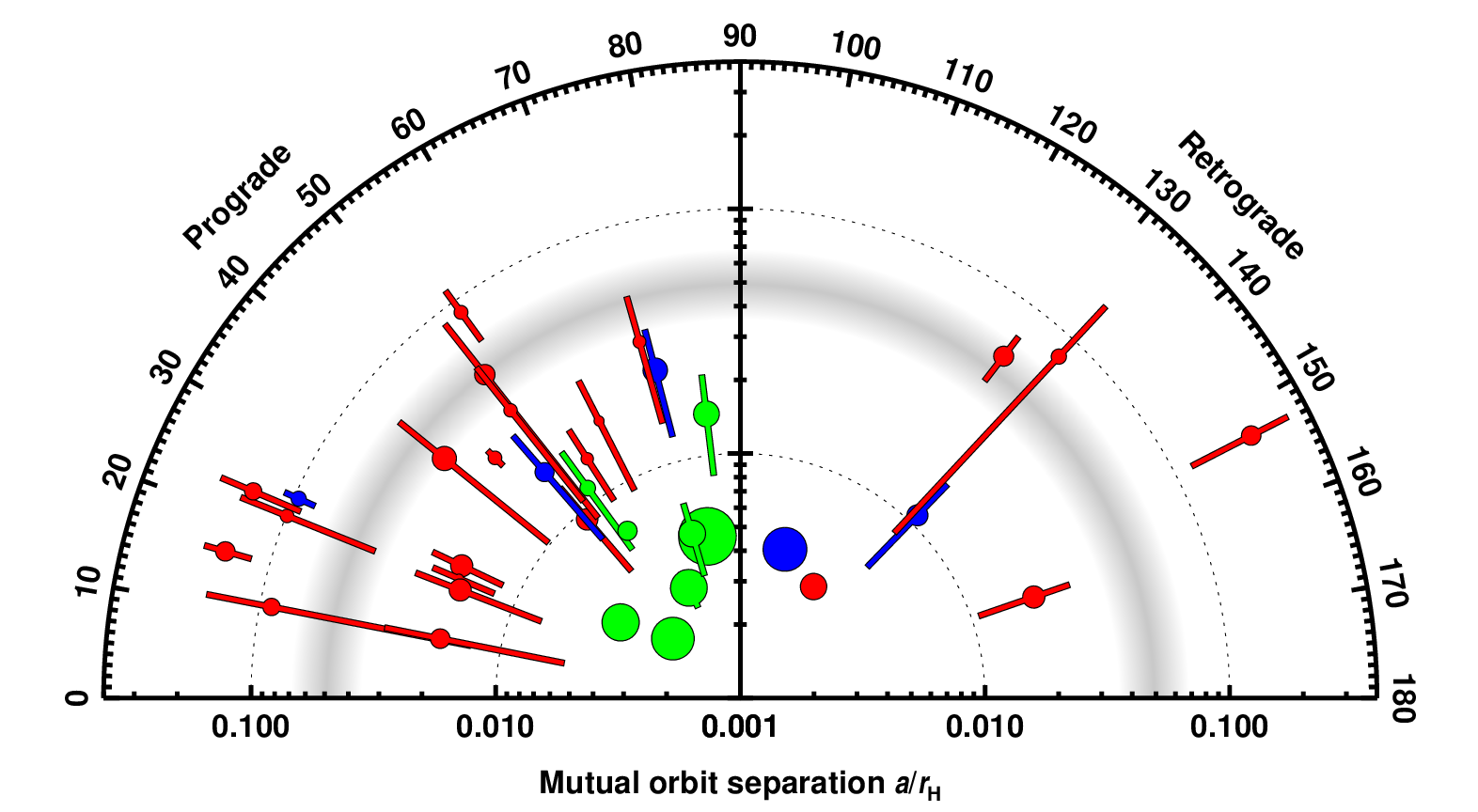
Mutual Orbit Orientations of Transneptunian Binaries
Published in 2019 in Icarus 334, 62-78.
W.M. Grundy1,2, K.S. Noll3, H.G. Roe4, M.W. Buie5, S.B. Porter5, A.H. Parker5, D. Nesvorný5, S.D. Benecchi6, D.C. Stephens7, and C.A. Trujillo2
(1) Lowell Observatory, Flagstaff AZ.
(2) Northern Arizona University, Flagstaff AZ.
(3) NASA Goddard Space Flight Center, Greenbelt MD.
(4) Gemini Observatory/AURA, Santiago Chile.
(5) Southwest Research Institute, Boulder CO.
(6) Planetary Science Institute, Tucson AZ.
(7) Brigham Young University, Provo UT.
Abstract
We present Keplerian orbit solutions for the mutual orbits of 17 transneptunian binary systems (TNBs). For ten of them, the orbit had not previously been known: 60458 2000 CM114, 119979 2002 WC19, 160091 2000 OL67, 160256 2002 PD149, 469514 2003 QA91, 469705 ǂKá̦gára, 508788 2000 CQ114, 508869 2002 VT130, 1999 RT214, and 2002 XH91. Seven more are systems where the size, shape, and period of the orbit had been published, but new observations have now eliminated the sky plane mirror ambiguity in its orientation: 90482 Orcus, 120347 Salacia, 1998 WW31, 1999 OJ4, 2000 QL251, 2001 XR254, and 2003 TJ58. The dynamical masses we obtain from TNB mutual orbits can be combined with estimates of the objects' sizes from thermal observations or stellar occultations to estimate their bulk densities. The ǂKá̦gára system is currently undergoing mutual events in which one component casts its shadow upon the other and/or obstructs the view of the other. Such events provide valuable opportunities for further characterization of the system. Combining our new orbits with previously published orbits yields a sample of 35 binary orbits with known orientations that can provide important clues about the environment in which outer solar system planetesimals formed, as well as their subsequent evolutionary history. Among the relatively tight binaries, with semimajor axes less than about 5% of their Hill radii, prograde mutual orbits vastly outnumber retrograde orbits. This imbalance is not attributable to any known observational bias. We suggest that this distribution could be the signature of planetesimal formation through gravitational collapse of local density enhancements such as caused by the streaming instability. Wider binaries, with semimajor axes greater than 5% of their Hill radii, are somewhat more evenly distributed between prograde and retrograde orbits, but with mutual orbits that are aligned or anti-aligned with their heliocentric orbits. This pattern could perhaps result from Kozai-Lidov cycles coupled with tidal evolution eliminating high inclination wide binaries.

Fig. 1. Binary mutual orbit inclination versus semimajor axis. Symbol sizes are indicative of system mass. Colors indicate dynamical class with red for Classical TNOs, blue for resonant TNOs, green for Centaurs and scattered disk objects, following Elliott et al. (2005). Radial bars indicate eccentricity, extending from periapse to apoapse. A fuzzy gray arc indicates the ~0.05 rH separation where there appears to be a transition between tight and wide binaries with distinct orientation distributions.